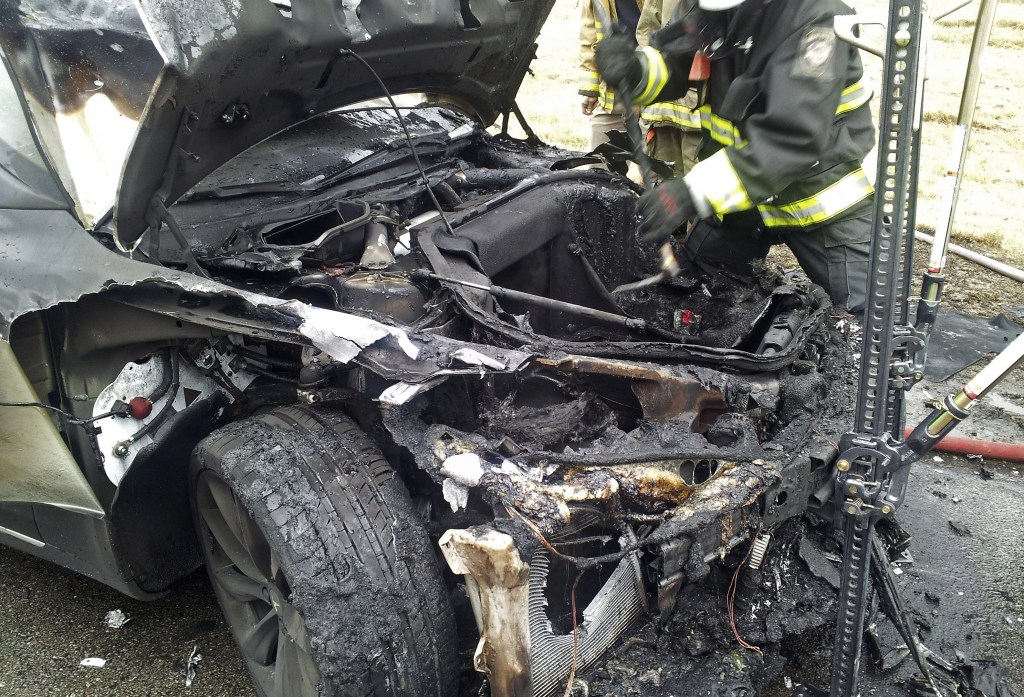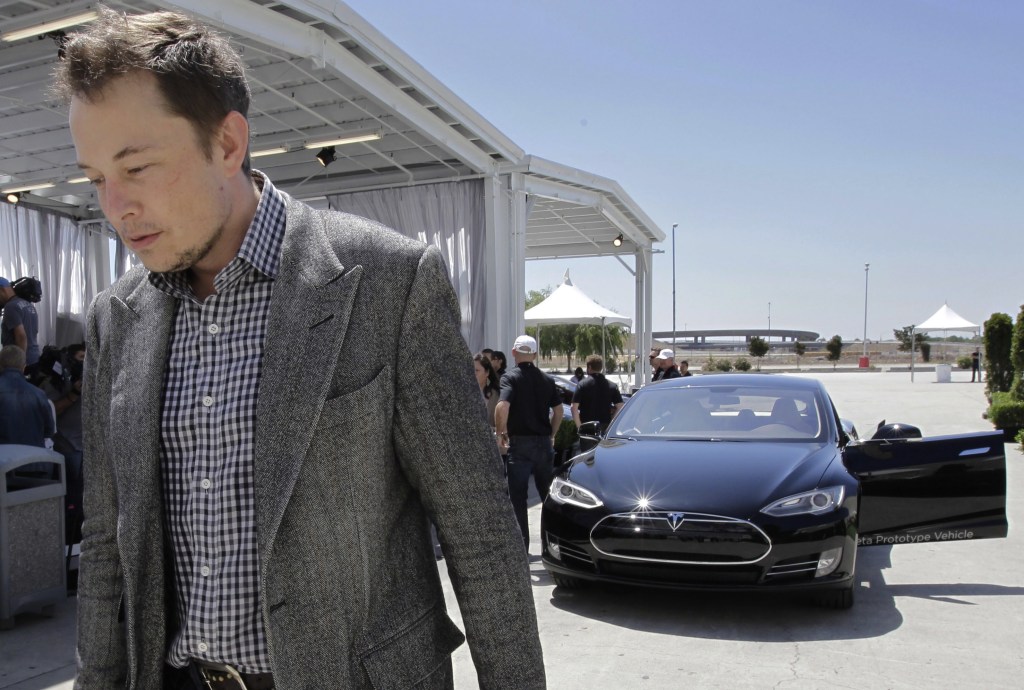The National Highway Transportation Safety Administration says it will investigate whether a safety defect had caused Tesla cars to catch on fire after striking road debris.
The probe, which was announced Tuesday on the agency’s website, involves more than 13,000 Tesla Model S vehicles.
On Tuesday morning, Tesla chief executive Elon Musk – anxious that fear of fire could dent sales of the cars just as they are starting to gain traction – had posted a blog item saying the company would amend its warranty to cover damage caused by fire “even if due to driver error.” He added that “unless a Model S owner actively tries to destroy the car, they are covered.”
Musk also said the company had asked the NHTSA to investigate the car’s safety in order to debunk safety fears, though agency Administrator David Strickland told reporters that he was “not aware of Tesla making a request of the agency to open a formal investigation.”
The investigation will zero in on the two accidents involving Tesla’s Model S, which had aced NHTSA crash tests and is being marketed as “the safest car in America.” Two cars, one in Tennessee and one in Washington state, caught fire after they ran over metal objects that punctured the cars’ lithium-ion battery packs, which lie along the bottom of the car. A third fire, in Mexico on Oct. 18, followed a high-speed crash. The drivers were not injured.
The fires, however, have stirred concerns among investors, who have driven the lofty price of Tesla stock down considerably. The stock, which started the year selling for less than $34 a share, has been as high as $193.37. At midday Tuesday, the shares had climbed to $127.19 apiece, up about 4.5 percent.
If an investigation were to lead to a recall, it would be a setback for Tesla, which sold about 5,500 cars in the third quarter. Fires in lithium-ion batteries have also been the focus of other investigations, including reviews of the Boeing Dreamliner and General Motors’ Chevy Volt.
Musk responded vigorously in his blog post, which was emailed to reporters. He noted that the frequency of fires with the Model S was still much lower than with gasoline-powered cars, saying that “an average of one fire per at least 6,333 cars, compared to the rate for gasoline vehicles of one fire per 1,350 cars.” He added, “You are more likely to be struck by lightning in your lifetime than experience even a non-injurious fire in a Tesla.” Musk also noted that the Model S battery pack has internal firewalls between its 16 modules, and a firewall between the battery pack and passenger compartment.
So far, there have been no reports of anyone killed in a Tesla Model S. Although that record will probably change, Musk conceded, he said that “it is literally impossible for another car to have a better safety track record, as it would have to possess mystical powers of healing.”
Musk wrote that “we have requested that the National Highway Traffic Safety Administration conduct a full investigation as soon as possible into the fire incidents.” He said that the safety investigation “did not at first seem like a good use of NHTSA’s time compared to the hundreds of gasoline fire deaths per year that warrant their attention,” but that he was concerned about whether “a false perception about the safety of electric cars is allowed to linger.”
In its statement, the NHTSA said its “decision to open any formal investigation is an independent process.
Send questions/comments to the editors.




Success. Please wait for the page to reload. If the page does not reload within 5 seconds, please refresh the page.
Enter your email and password to access comments.
Hi, to comment on stories you must . This profile is in addition to your subscription and website login.
Already have a commenting profile? .
Invalid username/password.
Please check your email to confirm and complete your registration.
Only subscribers are eligible to post comments. Please subscribe or login first for digital access. Here’s why.
Use the form below to reset your password. When you've submitted your account email, we will send an email with a reset code.